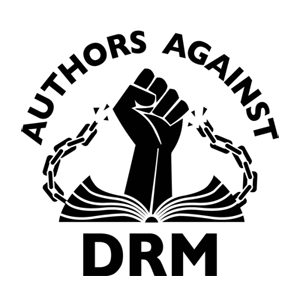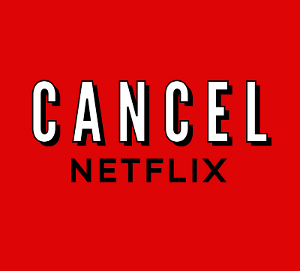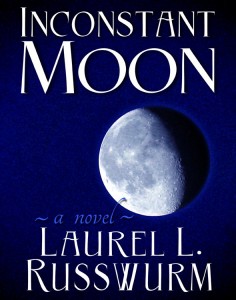[…] interweb freedom: DRM is Bad […]
Publishing DRM-Free

Although I’ve always understood censorship to be a bad thing, like everyone else — particularly other creators — I grew up believing copyright was beneficial for authors and culture. It is only in recent years, as copyright maximalists have successfully lobbied for copyright terms extending into the realm of the ridiculous that that I’ve come to understand just how harmful copyright law actually is, both for people and our culture.
Free thought and free speech are incredibly important for human beings. When writers dare not reference our own culture for fear of legal copyright repercussions, “copyright chill” leads to self censorship, which serves only to stunt our culture.
So much of our culture is shared in digital formats these days that the mainstream media industry developed and embraced “digital locks” in order to “protect” its investment in the media content it distributes. Copyright law calls them “”Technological Protection Measures” (TPMs), but these measures used to control how we humans use our media an devices are commonly known as “DRM.”
To those employing digital locks, DRM means “Digital Rights Management,” because these producers, publishers, manufacturers and distributors are managing their intellectual property rights on the property they continue to control, even after we have purchased it.
To the rest of us, DRM is effectively “Digital Restrictions Management,”and what is being managed is us.
What is Digital Restrictions Management?
Digital Restrictions Management is technology that controls what you can do with the digital media and devices you own. When a program doesn’t let you share a song, read an ebook on another device, or play a single-player game without an internet connection, you are being restricted by DRM. In other words, DRM creates a damaged good. It prevents you from doing what would normally be possible if it wasn’t there, and this is creating a dangerous situation for freedom, privacy and censorship…
DRM gives media and technology companies the ultimate control over every aspect of what people can do with their media: where they can use it, on what devices, using what apps, for how long, and any other conditions the retailer wants to set. Digital media has many advantages over traditional analog media, but DRM attempts to make every possible use of digital goods something that must be granted permission for. This concentrates all power over the distribution of media into the hands of a few companies. For example, DRM gives ebook sellers the power to remotely delete all copies of a book, to keep track of what books readers are interested in and, with some software, even what notes they take in their books.
So it is no surprise that many mainstream publishing houses have embraced DRM, and early digital self publishing platforms required DRM. But authors and readers pushed back, and so today many independent authors and self publishers can choose to say “No” to DRM, when publishing.
In common with the rest of the mainstream media, traditional publishing houses are eager to reap the benefits of the new digital technology, while employing DRM in an attempt to turn back the hands of time and deny the benefits of digital innovation to every one else. Clinging to their outmoded business model, and worse, attempting to impose it on today’s digital world, is very likely not going to end well for these corporate entities, as suggested by the npr article, E-Books Strain Relations Beween Libraries, Publishing Houses
Libreleft Books are published DRM free
Like most self publishers, Libreleft publishes in as many formats and markets as possible, so it is possible that DRM may be applied without my my knowledge. In the event you purchase Inconstant Moon or any future Libreleft publication and find it is encumbered with DRM, Libreleft Books guarantees to replace it with DRM free copy.
One of the things I’ve been learning about in my self publishing adventure is DRM. We all encounter DRM every day in our digital world, but most of us don’t recognize it. There are no warning labels, so even if we know what DRM is, we have no way of knowing if it is even present. When our digital media or devices don’t work, it doesn’t occur to us that the manufacturer or publisher deliberately degraded their products with DRM.
I’ve written a fair bit about the dangers of DRM, and much of my opposition to Canada’s new copyright law was because it made DRM supreme. Following the lead (and substantial pressure from) the American Government, Canada and the UK have passed copyright legislation making it illegal to circumvent DRM — even to access material to which we are legally entitled. Such legislation makes it illegal to play a legally purchased DVD on a computer with a free software operating system, or to listen to, watch or read freely licensed or public domain books, music or movies on devices and platforms that employ DRM to prevent it.
Although Kindle reading devices are themselves encumbered with DRM, I decided that my debut novel, “Inconstant Moon” is not. My self-publishing imprint, Libreleft Books, will continue to publish this and all future offerings DRM-free. Readers are free to safely back-up their Libreleft books elsewhere. As well, you are free to use Calibre to convert your Libreleft Kindle eBook file to any other format.
In Amazon’s product details section, DRM-Free eBooks are identified by: “Simultaneous Device Usage: Unlimited” so you can check to see if the e-book you are buying is DRMed.
[Caution: Since Amazon retains the legal right to access your Kindle, for your own protection, all your ebooks should be backed up elsewhere, just as all digital files you have an interest in keeping should always be backed up on different media or devices.]
Libreleft Books does not and will never digitally lock up any books with DRM (or TPMs).
Which is why I am proud to have Libreleft Books listed in “The Guide to DRM-Free Living” in the Literature: Individual Authors and Books section. The Guide is published by Defective by Design, a campaign of the Free Software Foundation
Self Publishers can choose to publish DRM-Free because it gives us the freedom to choose.
More on DRM
For more information about DRM and how to avoid it, read the Guide to DRM-Free Living.
TechDirt: Nina Paley “Librarians And Readers Against DRM [Updated]”
From Publisher’s Weekly, “A Whip to Beat Us With” by Cory Doctorow on the perils of DRM (also known as TPMs)
Author Culture “Authors Against DRM” by Tommie Lyn
Disruptive Conversations: As An Author, Why I Truly Hate Ebook DRM
Teleread: It is Now Illegal to Break DRM on E-Books in Canada!
Digital Copyright Canada: Russell McOrmond on DRM
interweb freedom: DAY against DRM: Video
Laurel L. Russwurm: These Boots Aren’t Made for Walkin’
Laurel L. Russwurm: C-11 ~ Criminalizes TPM circumvention without Warning Canadians
Defective By Design: #CancelNetflix: Arrested Development isn’t the only thing they screwed up
EFF’s Formal Objection to the HTML WG Draft Charter
laurel L. Russwurm: Tell the W3C “No DRM”
Cory Doctorow: What I wish Tim Berners-Lee understood about DRM
it’s coming
self portrait

self portrait
self portrait

self portrait
jack o lantern
Some people are into delicately carving elaborate designs into hollowed out pumpkins to create the seasonal exterior lamp we call a “Jack-O-Lantern.
 While these can be spooky in the dark, or beautiful works of art, I’m old fashioned. For me, the traditional jack-o-lantern wears a face. That’s why we call it “Jack.”
While these can be spooky in the dark, or beautiful works of art, I’m old fashioned. For me, the traditional jack-o-lantern wears a face. That’s why we call it “Jack.”
If you’ve ever tried to light a candle out of doors, you probably understand that a lantern shelters the flame from the wind that would otherwise extinguish it. Glass was at a premium in Canadian pioneer days, but pumpkins were thick on the ground. Since bringing in the harvest made for long days, hollowing out these large squash plants made a simple lantern that could be use out of doors when night starts falling early in the autumn months.
Hallowe’en has long been my favourite holiday, and we always had plenty of pumpkins to carve from the garden. We used to have great fun carving our scary faces into our pumpkins free style. These days many people buy permanent jack-o-lantern substitutes made of ceramic, glass or metal. My preference is always to make my own.
Make A Jack-O-Lantern
1. Cut open the pumpkin,
traditionally by cutting a circle around the stem, which then forms the handle of what will become your jack-o-lantern’s lid. For more artistic designs, often people avoid having the light escape around the edges of the lid by cutting the bottom out of the pumpkin. Depending on your pumpkin’s shape, this can provide more stability to a jack-o-lantern that will stay in one place. If there is any possibility that you will want to reposition your pumpkin once it’s lit, it is best to put the hole at the top.
 2. Scoop out the pumpkin guts
2. Scoop out the pumpkin guts
using a large spoon. This is a messy job, so I scoop out the seeds and the strings into a metal mixing bowl, being careful to scrape the interior sides of the pumpkin smooth. The seeds can be baked in the oven later.
 3. Draw on the face
3. Draw on the face
(or whatever design you plan to use) using pen or marker. You will cut away the drawing as you cut out your pattern. Note: The “child safe” pumpkin carving tool (pictured above) was not very good.
 4. Cut Out The Face or design.
4. Cut Out The Face or design.
If the piece you remove is large, you can do it incrementally. If your child is old enough to carve a pumpkin, s/he is probably old enough to use a paring knife. As you can see, this jack-o-lantern was opened and emptied from the bottom.
 Glowstick Jack-O-Lantern . . .
Glowstick Jack-O-Lantern . . .
If you plan to place your jack-o-lantern along the path where trick-or-treaters — who often wear flowing and/or flamable costumes are likely to walk, you might want to consider using a glowstick rather than a candle in your jack-o-lantern.
 Candle lit Jack-O-Lantern . . .
Candle lit Jack-O-Lantern . . .
Especially if you plan on using a candle to light your jack-lantern, remember that it can be a fire hazard, so:
- don’t carve the pumpkin a week before so it dry out (I do it on the day)
- ensure that the interior walls are scraped clean of all the pumpkin strings
- don’t use a candle with a flame that burns high enough to touch the roof or walls of the jack-o-lantern
Tea lights — the small candles used to keep a teapot warm — are a good choice.
Have a safe and happy Hallowe’en.
post script
First, I’ve changed my weekly blog posting day from Saturday to Sunday.
This article needed some photos I didn’t heave, so I found these licensed to share photos on flicker:
Adventures with Amazon Central
[This article is reprinted from the Laurel L. Russwurm, Author blog.]
When you decide to self publish, it’s important to be as visible as possible. This is a big part of why I am all over the Internet, and why I’ve just set up my “Author Page” on Amazon Central. Unfortunately the Amazon page is a rigidly set up form that limits what and how authors can share our information.
Possibly the most ironic part of the experience was where the page offers the new user an opportunity to view a “sample” page. What displays is Frank McCourt’s Author Page, which demonstrates where the author photo will sit, as well as showing off Frank’s nice black & white title banner. In creating my own banner, I even made sure to use the exact dimensions of Frank’s banner.

The problem is that while my author photograph rests on the left just like Frank’s, alas, there is no way for me to upload my own black and white name banner to Amazon Central, nor any means of creating one on the site. It is possible such banners used to be allowed, but since that is not the case now, Frank’s page does not provide a true example of how an Amazon Central Author Page will look.
Another difficulty was having a limited space for the biography without knowing what the limit was, exactly. The limit is not screen real estate; it makes no difference whether your words are squished together in a single paragraph or spread out in airy paragraphs. The limit is probably by word or character count, but it required trial and error and tinkering to ensure mine ended where I wanted it to. You can exceed the limit but then are left with only an exerpt, not the best way to make an introduction.
The “Upcoming Events” segment had its issues as well. Naturally I intended to add my participation in NaNoWriMo 2013. While the form allows this, but automatically fills in the venue information with the physical address of the NaNo HQ. My participation will be taking place online, not in California. I can see this being a problem for me forever, since the address for the venue for many of my own events will be “online.” Altering the form to allow the inclusion of a URL as an address would be very helpful.
My last problem is that the section requires an Amazon published book title. While I can understand why Amazon would like to encourage this, NaNoWriMo isn’t an event for selling books that are already written, but to encourage the writing of new novels. Including the name of my debut novel was not really appropriate here, but is required by the form, so I was torn between not making use of the space or including information that isn’t quite right. I’m still trying to come up with a way to make it work.
Beyond these glitches, my page came out fine. 
litter liner

Way back when I first became a cat owner, I disliked the fact that plastic cat litter boxes retain odors. So I was very happy to discover plastic litter liners, which were drawstring plastic bags used to line the box. When the litter needs changing, you just pulled the string and put it in the trash. Voila!
But that was years ago. These days, “disposable” plastic is my last choice since it doesn’t break down very well. Then my community introduced the “green bin” program so cat litter could join compostables rather than laying inert in plastic bags in the landfill.
But what about plastic litter liners?
Was there something bio-degradable? For a while I had been spending money buying doggy doo-doo bags made from cornstarch, because they were supposed to be biodegrable, even though they looked like plastic. My husband tried composting one of the bags in our back yard composter, but a year later, it hadn’t broken down at all. So I don’t have much faith in “compostable” cornstarch plastic bag replacements. So replacing plastic bags with something just as bad is no help at all.
But paper is biodegradable, so a thick paper bag — like a leaf bag — would be just the thing. I tried very hard to find litter pan liners made from paper, but even my local specialty pet store had never heard of such a thing. That left me no choice but to make my own. I decided to start with a paper leaf bag. Here in Ontario you can get these in grocery and hardware stores. I found the hardware store bags more durable.
Leaf Bag Make-Over → Litter Liner
Step 1: CUT the top off leaving the bag about twice as high as the litter pan.
Step 2: FOLD over the top, so it is about half again as tall as the litter pan.
Step 3: FOLD AGAIN a little more loosely this time. This makes a bit of a lip that can be shaped to fit the sides of the pan.
Step 4: CUT an extra piece from the paper that was cut off the top
Step 5: LINE THE BOTTOM of the bag for additional leak protection
Step 6: ADD LITTER and the Litter Box Cover if any.
When it’s time to change the litter, remove the litter box cover, and
Step 7: UNFOLD the sides of the bag and ROLL THE TOP TOGETHER
to keep the litter inside, then dispose of the bag in the green bin.
Green Bin photo from Wikipedia shared by NotYouHaha with a Creative Commons Attribution 3.0 Unported License
rose
Comment on baker’s clay like Mom used to make by a maker’s space – doll house
[…] baker’s clay like Mom used to make […]











